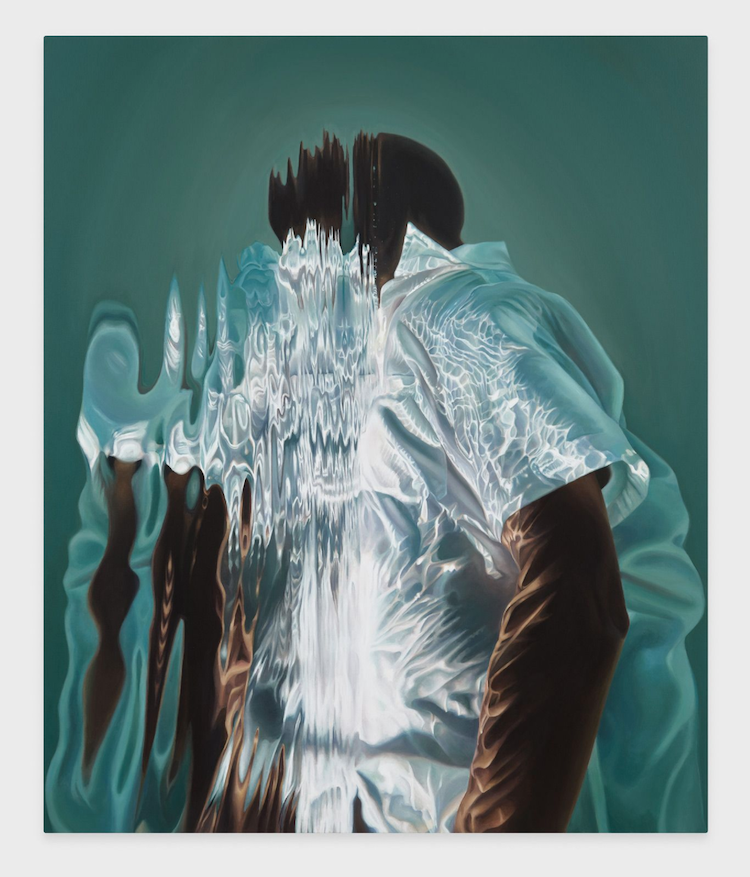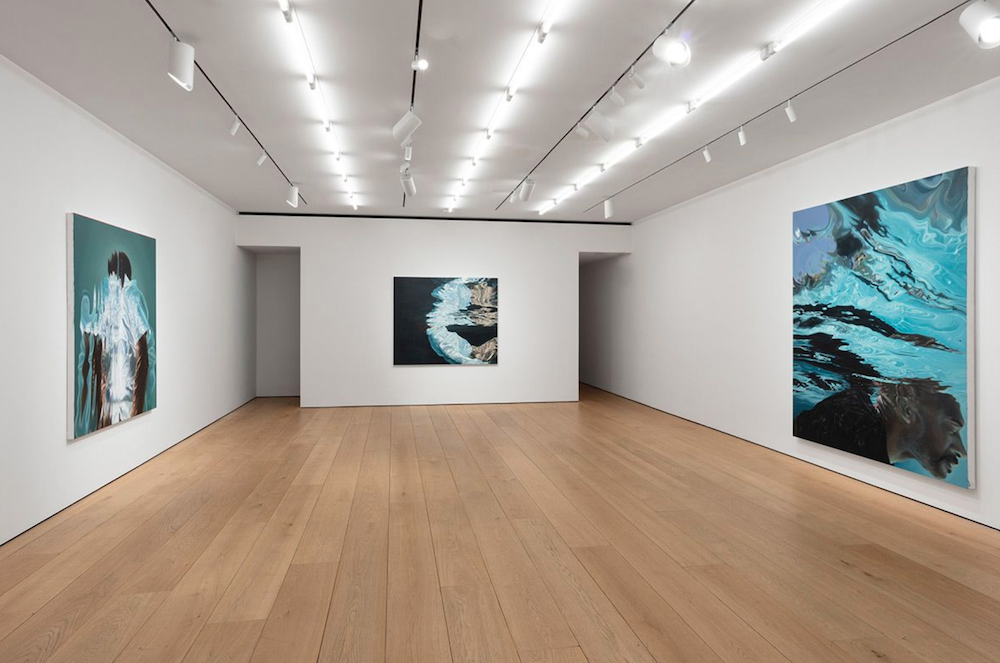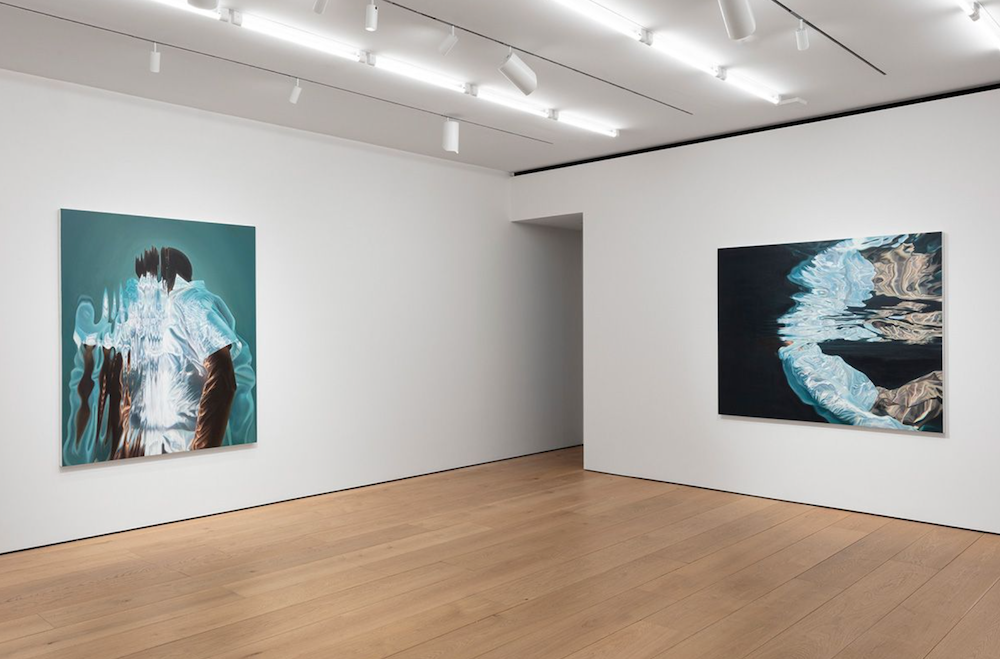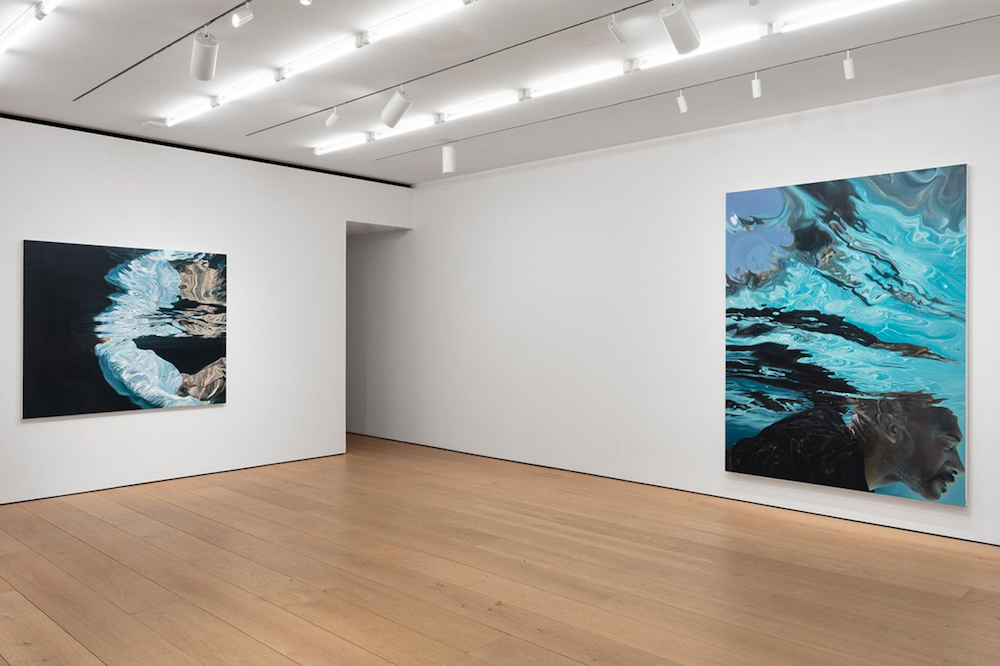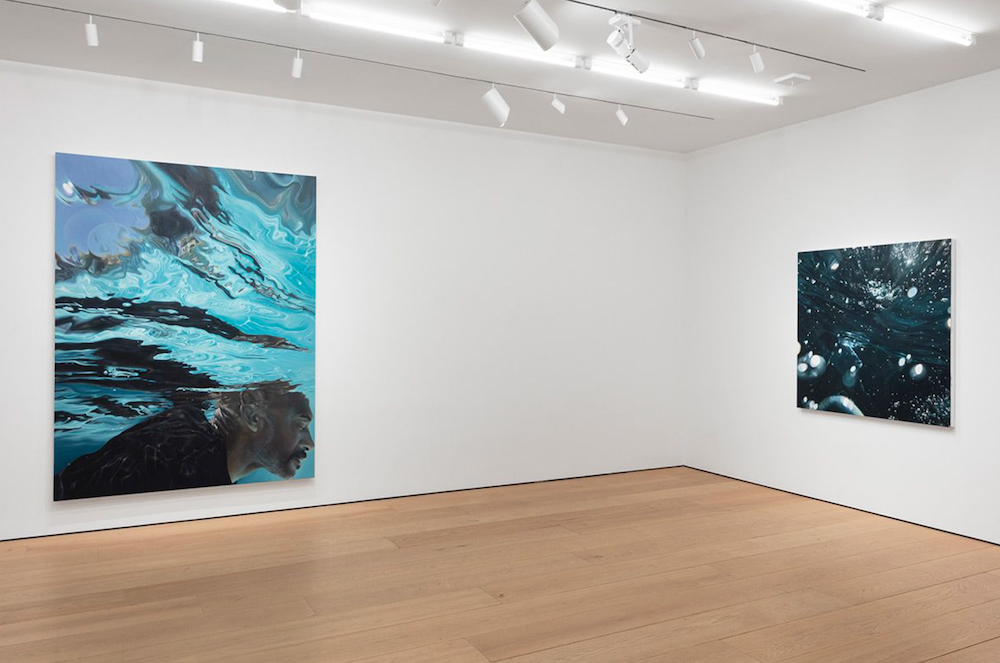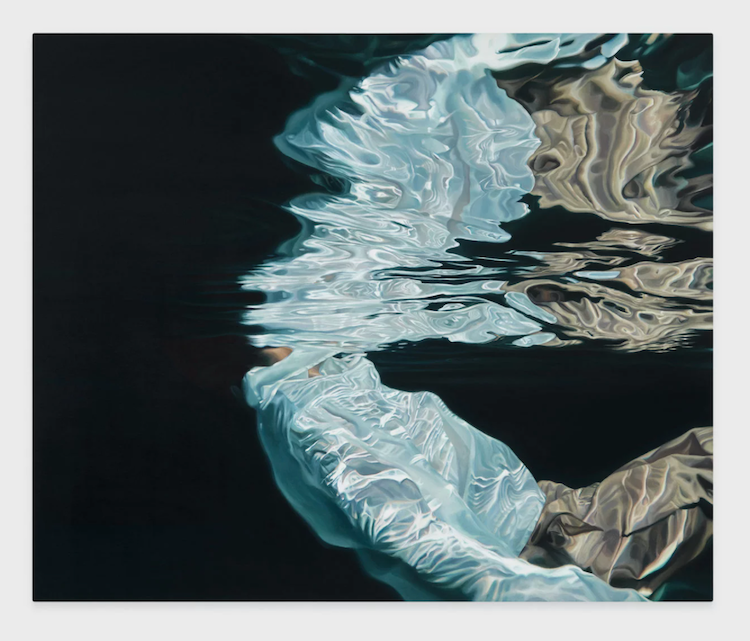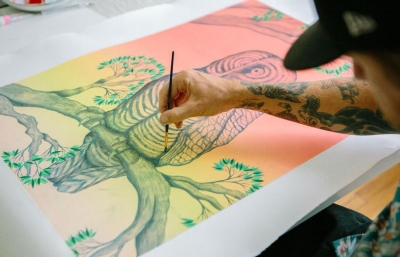There is a sense of freedom and almost subconscious fear about floarting in water. We understand the power of the ocean, the push and pull of the tide and the waves, the way our bodies feel in and out of the water, how gravitational pull works and how that simple act of flaoting or submerging yourself in the unknown is both cleansing and surreal. Calida Rawles is painting that idea of clarity and the surreal, the cleanse and the plunge. She's creates a sense of photorealism with mystery, with an almost folkloric authorship. Her paintings of black bodies in water, a conversation and "critical investigation into the complicated relationships between race, narrative, and positionality," are some of the most powerful paintings to emerge into the contemporary art world over the last half decade.
"I think there’s this soul of the water for me, of memory, space and time, all of it colliding, the molecules…," Calida told us last Summer in a feature interview. "... For a galaxy to be in the water makes sense to me, since we’re all made up of stardust, let’s say, it’s all there, and then when I’m splashing in the water, and light hits it, it sometimes looks like stars. It just glows. I’m even fascinated by how my body looks and feels different in another element."
In a new series of paintings, 4 to be precise, titled On the Other Side of Everything and on view at Lehmann Maupin in NYC, there is a mixture of joy and unease in the bodies. She paints and thinks about ideas of rest and relaxation, of rest as a political vehicle but also as a necessary act of regeneration, of the soul rebuilding. As Rawles says about the new works, “we, the viewer, are on the other side [outside] of their perspective. We are on the other side of everything.” That solitary act, both as viewer and in the subject's themselves, feels like a powerful testament to the times we live, and the world we plunge ourselves back into. —Evan Pricco



